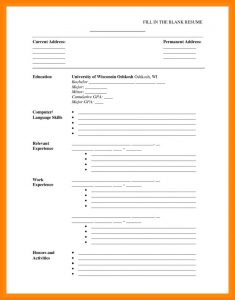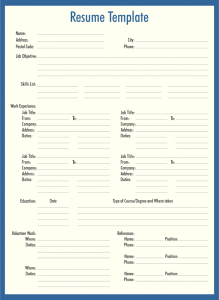How to Build a Strong Resume and Impress Employers
In today’s competitive job market, a well-crafted resume is essential for standing out to potential employers. Your resume serves as a marketing tool that showcases your skills, experiences, and accomplishments, ultimately influencing whether you get called in for an interview. Here’s a step-by-step guide on how to build a strong resume that impresses employers and sets you apart from the competition.
1. Choose the Right Format
The first step in crafting a strong resume is selecting the right format. There are three primary types of resume formats:
- Chronological: This is the most common format, where you list your work experience in reverse chronological order. It’s ideal for those with a strong work history in the same field.
- Functional: This format focuses on skills and experience rather than chronological work history. It’s suitable for those changing careers or with gaps in employment.
- Combination: This hybrid format allows you to highlight both your skills and work experience, making it versatile for various situations.
Choose the format that best highlights your strengths and experiences.
2. Craft a Compelling Summary or Objective Statement
Your resume should begin with a strong summary or objective statement. This section provides a snapshot of your qualifications and goals.
- Summary Statement: Best for those with experience, a summary should highlight your key achievements and skills in a few sentences.
- Objective Statement: More suitable for entry-level candidates, an objective focuses on your career goals and what you hope to achieve in the role.
Tailor this section to the specific job you’re applying for, incorporating relevant keywords from the job description.
3. Highlight Your Relevant Skills
Employers are looking for candidates who possess the skills necessary for the job. Create a dedicated skills section that includes both hard skills (technical abilities specific to the job) and soft skills (interpersonal attributes).
Be sure to include skills that match the job description, as this demonstrates your alignment with the employer’s needs.
4. Detail Your Work Experience
The work experience section is often the most critical part of your resume. List your previous positions in reverse chronological order, including:
- Job Title
- Company Name
- Location
- Dates of Employment
For each role, include bullet points that highlight your key responsibilities and accomplishments. Use action verbs and quantify your achievements where possible. For example:
- Increased sales by 25% within six months through targeted marketing strategies.
- Developed a new onboarding process that improved employee retention rates by 15%.
5. Include Education and Certifications
Your education section should follow your work experience, especially if you are a recent graduate. Include:
- Degree(s) Earned
- Institution Name
- Location
- Graduation Date (or expected graduation date)
If you have relevant certifications, include them in a separate section or alongside your education. Certifications can demonstrate specialized knowledge and enhance your candidacy.
6. Incorporate Keywords and Phrases
Many companies use Applicant Tracking Systems (ATS) to filter resumes. To ensure your resume gets through these systems, incorporate keywords and phrases from the job description. This not only helps with ATS compatibility but also aligns your qualifications with what the employer is looking for.
7. Keep It Concise and Relevant
Employers typically spend only a few seconds scanning each resume. Aim for a one-page resume if you have less than 10 years of experience. For more extensive careers, a two-page resume may be acceptable. Regardless, be concise and focus on the most relevant information.
8. Proofread and Edit
Errors in spelling, grammar, or formatting can make a negative impression on employers. Always proofread your resume multiple times and consider asking a friend or mentor to review it as well. Use tools like Grammarly to catch any overlooked mistakes.
9. Add a Touch of Personality
While professionalism is key, adding a touch of personality can help you stand out. You might include a brief section about your interests, volunteer work, or hobbies that are relevant to the job or showcase your character. This can help employers see you as a well-rounded candidate.
10. Tailor Each Resume for Specific Applications
One of the most important steps in building a strong resume is tailoring it for each job application. Highlight the experiences and skills that are most relevant to the specific role you’re applying for. This extra effort demonstrates your genuine interest in the position and helps you connect with the employer’s needs.
Conclusion
A strong resume is your ticket to making a great first impression on potential employers. By choosing the right format, crafting a compelling summary, highlighting relevant skills and experiences, and tailoring your resume for each application, you’ll significantly increase your chances of landing that coveted interview. Remember, your resume is a reflection of you—make it count! With careful attention to detail and a focus on your unique strengths, you can create a resume that stands out and impresses employers.









